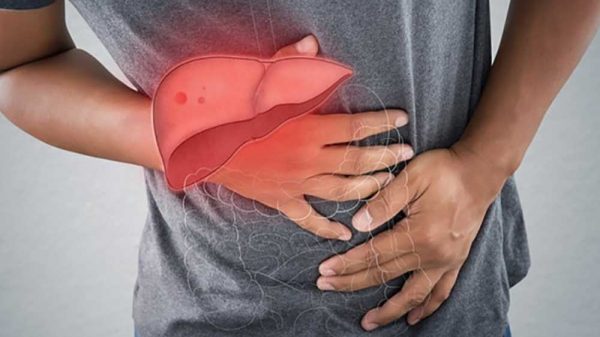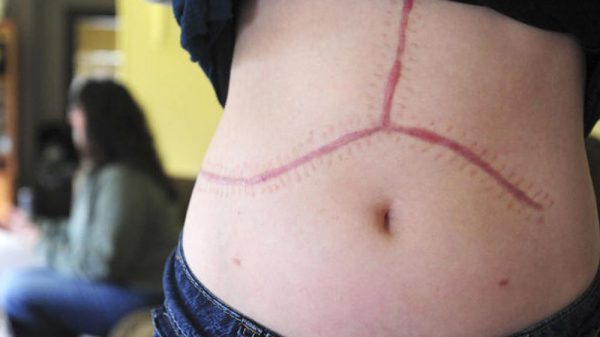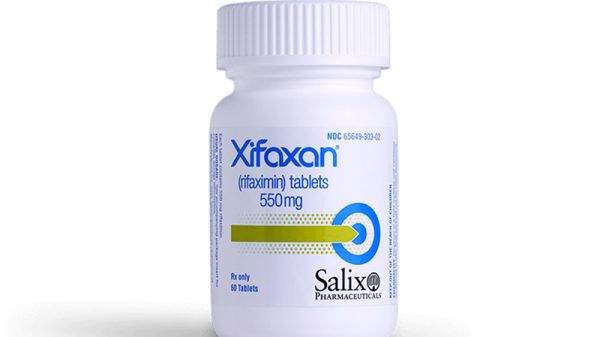For a huge portion of the American population, coffee is fuel. Having a hot cup of joe in the morning is many people’s favorite way to start the day. But did you know there are also numerous health benefits to having your routine coffee? Keep reading to find out how coffee benefits your liver, as well as how to make the healthiest coffee beverages for promoting liver health.
The Link Between Coffee and Liver Health
Is coffee healthy, and is coffee good for liver? The answer to these questions is an unequivocal yes; the positive effects of coffee are clear.
Science shows that coffee is beneficial for the liver. Numerous studies show the correlation between healthier levels of liver enzymes and increased consumption of coffee. Liver enzymes like alanine aminotransferase (ALT), alkaline phosphatase (ALP), aspartate aminotransferase (AST), and gamma-glutamyl transferase (GGT) are common measures on routine bloodwork during your annual physical. Elevated levels of these enzymes may indicate inflammatory conditions like fatty liver disease, nonalcoholic steatohepatitis (NASH), or liver cirrhosis.
Furthermore, research has shown that coffee may also reduce the risk of developing liver fibrosis, liver cirrhosis, and liver cancer, all of which may occur as a result of numerous liver conditions. Nonalcoholic fatty liver disease, alcoholic fatty liver disease, or viral infections like hepatitis have the potential to progress to fibrosis, cirrhosis, and cancer. Fibrosis is the development of fibrotic tissue in the liver, which if left untreated, can harden and impair liver function. Continued fibrosis and cirrhosis can damage liver cells and increase the risk of developing liver cancer. Interestingly, science suggests that coffee consumption is linked to lower risk of these liver diseases. (1)
Does decaf coffee provide the same benefits as caffeinated coffee? According to research, decaf coffee seems to be as effective as regular coffee. Researchers at the Division of Cancer Epidemiology and Genetics at the National Cancer Institute in Bethesda, Maryland found that across an experimental group of over 27,000 participants, coffee intake seemed to consistently have therapeutic effects on elevated liver enzymes despite variations in caffeine content. (2)
This suggests that other particles present in coffee, like polyphenols or other antioxidant compounds, play a larger role than caffeine in ameliorating elevated liver enzymes.
Coffee: An Elixir for Nonalcoholic Fatty Liver Disease?
Interestingly, research shows across the board, coffee intake seems to be associated with improved liver status, regardless of disease pathology. Among studies focusing mainly on nonalcoholic fatty liver disease and metabolic syndrome, coffee consumption generally seemed to exhibit some protective effects against the progression of disease. (1)
However, it’s important to note that simply drinking coffee is not a surefire way to prevent or reverse nonalcoholic fatty liver disease. Drinking coffee on top of a high-fat, high-sodium diet that’s full of refined carbohydrates will likely have a blunted effect.
On the other hand, following a diet and lifestyle designed to reverse fatty liver will bolster coffee’s hepatoprotective effects.
How Coffee Can Support Reversal of Fatty Liver Disease
Ok, so maybe coffee isn’t a magic fix for fatty liver disease on its own. However, it is an excellent addition to a liver-friendly diet to help lower inflammation and protect against fatty liver disease progression. To get the most out of your coffee, it is imperative to pair it with a diet that is high in fruits, veggies, whole grains, legumes, and high-quality protein, and low in refined carbs, added sugars, and saturated fat.
Aside from the anti-inflammatory, antifibrotic, and protective effects on the liver, the caffeine in coffee delivers an extra energy jolt that gets your day going. Caffeine can even provide extra energy to motivate workouts while also curbing your appetite.
But with such a variety of coffee products and beverages out there, how can you make sure that your coffee is the healthiest it can possibly be? Let’s go through the types of coffee and coffee drinks that pair the best with a diet for reversing fatty liver disease.
What Type of Coffee Is Best?
So, is there a particular type of coffee that possesses the most curative properties? A study published in Gene Expression: The Journal of Liver Research shows that regular old drip coffee is the best in terms of preventing fibrosis when compared to espresso. The study points out that this result could be confounded by the fact that espresso is often consumed in a latte or could suggest that hepatoprotective properties are removed in the preparation of espresso. (3)
Does this mean you should stop drinking your espresso? Absolutely not. The literature is not conclusive on the kind of coffee or components of coffee that are responsible for antifibrotic activity. If you want, you can try mixing up your coffee options or adding an extra cup of drip coffee to your afternoon could be one way to make sure you’re getting antifibrotic benefits.
How Many Cups of Coffee a Day Should You Drink?
Some research shows that the benefits of coffee may to some extent be dose-dependent. In a study conducted by researchers at the Keck School of Medicine at the University of Southern California, University of Hawaii Cancer Center, and the Department of Medicine at Cedars-Sinai Medical Center in Los Angeles, coffee intake was evaluated along with the risk and mortality associated with chronic liver disease and liver cancer. Results found that 2-3 cups of coffee daily significantly reduced risk, while 4 cups or more was associated with an even greater reduction in risk. (4)
Should you start guzzling coffee by the quart? No – you don’t want to experience any adverse side effects of caffeinated coffee like feeling jittery or having difficulty sleeping. If you have nonalcoholic fatty liver disease, your normal quantity of coffee is likely adequate.
At-Home Healthy Coffee Drink Ideas and Tips
Regardless of how you prefer your coffee prepared, there are ways to make sure your coffee creation both serves your liver and satisfies your taste buds.
Avoid Unhealthy Additions to Your Coffee
This is probably the most important guideline when preparing your coffee. Keep in mind that the beneficial part of coffee comes from the coffee itself. Sugary and fatty additives that may make a coffee beverage taste good often negate the health benefits that plain coffee would provide.
Make Substitutions
If you don’t like drinking your coffee plain, you can still make your coffee taste like a treat with strategic choices.
1. Skim Milk
Swapping whole milk or cream for skim milk can significantly cut down the fat content while still providing lots of protein. Saturated fat found in whole milk and cheeses is a contributing factor to high cholesterol, metabolic syndrome, and heart disease.
If going from whole milk to skim milk feels like a step too far, first try substituting 1% or 2% milk. Lower-fat milk will provide some creaminess while removing a significant amount of saturated fat. Once you get used to low-fat milk, try nonfat or skim milk. You can even try blending skim milk and 1% milk.
2. Coconut Milk
If you’re craving a really creamy coffee or a dollop of whipped cream, coconut milk is the way to go.
It is true that full-fat coconut milk contains loads of saturated fat, so try to use it sparingly. However, your body processes the saturated fat in coconut milk differently than the saturated fats found in full-fat animal products. The saturated fat chains found in animal products are longer in length and are more difficult for your body to process.
In contrast, the saturated fat chains found in coconut milk are referred to as medium-chain triglycerides, which your body is readily able to use for energy. Medium-chain triglycerides in coconut milk also provide excellent boosts of energy before a workout.
3. Other Plant-Based Milks
A variety of plant-based milks are available in grocery stores and work great as low-calorie, low-fat creamers for your coffee. Almond milk and cashew milk naturally tend to be the lowest in fat and calories, though they are also thinner in texture and lack protein. Soy milk affords a creamier option, though still low in fat. One of the perks to soy milk is its high protein content.
Hemp milk, oat milk, and plant-based milk blends are available as well. Just experiment with what works for your palate. Before buying a milk substitute, always be sure to check the nutrition label for grams of fat and sugar. Some plant-based milks contain lots of added sugars, so just be sure to choose the low sugar or sugar-free options.
4. Alternative Creamers
For some, plain milk with coffee just doesn’t cut it. Creamers with flavor are necessary to give coffee beverages that extra punch of flavor. At your nearby grocery store, you can often find healthy alternatives to traditional creamers that are low in sugar and fat, but still creamy and satisfying. Several creamers available at grocery stores are made with plant-based milks like coconut milk and almond milk. These creamers are available in a variety of seasonal and year-round flavors like pumpkin spice, peppermint, hazelnut, and vanilla.
5. Sugar Substitutes
It’s easy to add a few heaping spoonfuls of sugar to naturally bitter coffee. But added sugar harms metabolic health and contributes to fatty liver disease. When you consume refined sugars, your body rapidly digests them and passes them into your bloodstream. Your blood sugar spikes, and over time, this pattern of sugar consumption can contribute to insulin resistance and metabolic syndrome.
Instead of refined sugar, try a sugar-free substitute such as Stevia or erythritol. Sugar substitutes like Stevia are excellent options for sweetening drinks without the negative impacts of sugar. Erythritol is a compound naturally derived from fruit that contains no calories or sugar while providing some anti-inflammatory benefits.
Another good option for sweetening coffee is agave nectar, which has a low glycemic index. This means that it is converted to glucose more slowly than conventional unrefined sugar and therefore contributes less to spikes in blood sugar.
Remember, when it comes to sugar – artificial or real – controlling quantity is key. Adjusting your palate by slowing cutting down on sugar is the best way to curb your desire for sugar and reduce its role in your diet.
Coffee Recipe Ideas
If you want to add an extra nutritional punch to your coffee, try these recipes!
Coffee Protein Shake
This one is great for those of us who struggle with getting up in time to sit down to a proper breakfast and coffee. Sometimes, combining breakfast and coffee in a high-protein shake does the trick for satisfying your caffeine fix while providing energy for the day. Make sure that your protein powder contains all essential amino acids without added sugars.
Try combining the following ingredients in a blender:
- Cold-brew coffee
- 2 frozen bananas
- A packet of chocolate protein powder
- A tablespoon of peanut butter
- Soy milk
Blend ingredients until smooth. Feel free to experiment with amounts of ingredients. Using less soy milk and coffee will result in a thicker shake, while more soy milk and coffee will result in a thinner shake.

Homemade Chocolate Frappuccino
A cold coffee drink is a go-to on hot summer days. This recipe is a spin on a classic Frappuccino but without loads of fat, sugar, and calories! This recipe also contains additional antioxidants from cocoa that promote liver health. As with the coffee protein shake recipe, feel free to experiment with the proportions in accordance with your tastes and preferences.
Combine the following ingredients in a blender:
- Ice
- A teaspoon of cocoa powder
- Soy milk (or milk of choice)
- Erythritol, Stevia, or agave nectar
- Espresso, cooled drip coffee, or other coffee of your choice
Blend all ingredients in a blender until desired consistency is reached. In a separate cup, use a manual milk foamer to whip full-fat coconut milk. Pour Frappuccino into a glass and top with a large scoop of coconut “cream.” For an extra treat, drizzle with sugar-free, dark chocolate sauce.
Simple, Yet Tasty Latte
Lattes are warm and comforting on a blustery winter day, and making a healthy version is easier than you think. Simply brew one or two espresso shots in a coffee mug. Using a manual milk foamer, whip a milk of your choice until it reaches a foamy consistency. Tip: Less fat is better, but a little fat is necessary to create the right consistency of a latte. To avoid saturated fats from dairy, try combining coconut milk and almond milk for a balanced blend.
Pour frothed milk over espresso and garnish with a sprinkle of cinnamon for extra antioxidants. Enjoy!
Extra Tip
To add the benefits of protein to your coffee drinks without extra calories, try adding a high-quality essential amino acid supplement. And of course, drinking black coffee works great too, if you prefer that timeless classic.
How to Lighten Up Your Coffee Order
Who doesn’t love a caramel macchiato, pumpkin-spiced latte, mocha, cappuccino, or Frappuccino with a heap of whipped cream? However, loads of fat, sugar, and calories are usually hiding in the menu versions of these delicious drinks. As an example, a grande peppermint mocha at Starbucks contains a whopping 15 grams of fat, 54 grams of sugar, and 440 calories. (5)
If you’re ordering these coffee drinks at a coffee shop, it can be trickier to know what the ingredients are. Many coffee shops including Starbucks give you options for low-fat, plant-based milks, as well as low-sugar and sugar-free options. Don’t be shy about asking the baristas for the ingredients and substitutions; they are happy to help, and your request is not uncommon.
Don’t Drink Coffee?
If you have fatty liver disease and you’re not a coffee drinker, not to worry! Drinking coffee is not a requirement in reversing fatty liver disease or preventing progression. But it also wouldn’t hurt to try incorporating healthy coffee beverages into your routine. Experiment and find out what recipes and preparations work best for you.
Precautions When Drinking Coffee
When weighing the pros and cons of coffee, the pros tend to outweigh the cons. However, for certain individuals, drinking coffee may come with risks, mainly related to caffeine content. If you have heart disease, heart palpitations, or related conditions, caffeine in coffee may worsen symptoms and raise blood pressure.
High caffeine intake may also worsen sleep issues or exacerbate symptoms associated with anxiety, such as a racing heart. If you have issues with sleep, try drinking coffee in the morning, and avoid drinking coffee at night. If needed, try limiting your intake to just one cup per day.
If you are pregnant, there is a recommended caffeine limit to protect your growing baby. In certain cases, eliminating caffeine intake may be the best move. If you love coffee regardless of the caffeine content, try decaf coffee as an alternative. Check in with your doctor to make sure that caffeine consumption is safe for you.
Coffee Is Good for You, in More Ways Than One
Most coffee-drinkers gravitate to coffee for its awakening effects. Coffee also shows promise as a liver protector, when combined with a liver-friendly diet. There are also numerous options for substitutions to turn your favorite coffee beverages into healthy versions for fatty liver disease. So, if you’re a coffee lover- drink up!
References:
(1) https://www.ncbi.nlm.nih.gov/pmc/articles/PMC5440772/
(2) https://www.ncbi.nlm.nih.gov/pmc/articles/PMC4245376/
(3) https://www.ncbi.nlm.nih.gov/pmc/articles/PMC5885142/
(4) https://www.ncbi.nlm.nih.gov/pmc/articles/PMC4274222/
(5) https://www.starbucks.com/menu/product/496/hot?parent=%2Fdrinks%2Fhot-coffees%2Fmochas























